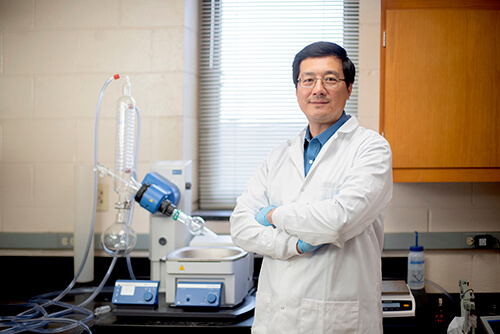Scientists Identify Malfunctioning Brain Cells as Potential Target for Alzheimer’s Treatment

For the first time, scientists have identified a rare population of potentially toxic senescent cells in human brains that can serve as a target for a new Alzheimer’s disease treatment.
The study, published in December 2021 in Nature Aging, was co-led by Miranda Orr, PhD, assistant professor of gerontology and geriatric medicine at Wake Forest University School of Medicine and research health scientist at the W.G. Hefner VA Medical Center.
Senescent cells are old, sick cells that cannot properly repair themselves and don’t die off when they should. Instead, they function abnormally and release substances that kill surrounding healthy cells and cause inflammation. Over time, they continue to build up in tissues throughout the body and contribute to the aging process, neurocognitive decline and cancer.
Orr is in the process of launching a $3 million, Phase 2 clinical trial funded by the Alzheimer’s Drug Discovery Foundation (ADDF) to test the effects of clearing senescent cells in older adults with mild cognitive impairment or early stage Alzheimer’s. The intervention, which was discovered by Orr’s collaborators at the Mayo Clinic, consists of administering a repurposed U.S. Food and Drug Administration-approved drug designed to clear cancer cells in combination with a flavonoid, a plant-derived antioxidant.
“Dr. Orr’s innovative research stands out as an exciting new way to target one of the many underlying factors that contribute to Alzheimer’s disease,” said Howard Fillit, MD, founding executive director and chief science officer of the ADDF.
“Dr. Orr and her team are paving the way in senolytics research for Alzheimer’s disease, opening up a new target for potential treatments. This is especially exciting for the field as we now know we will need drugs that work against the many underlying biological processes that go wrong as we age – like the buildup of toxic senescent cells – that contribute to Alzheimer’s disease.”



